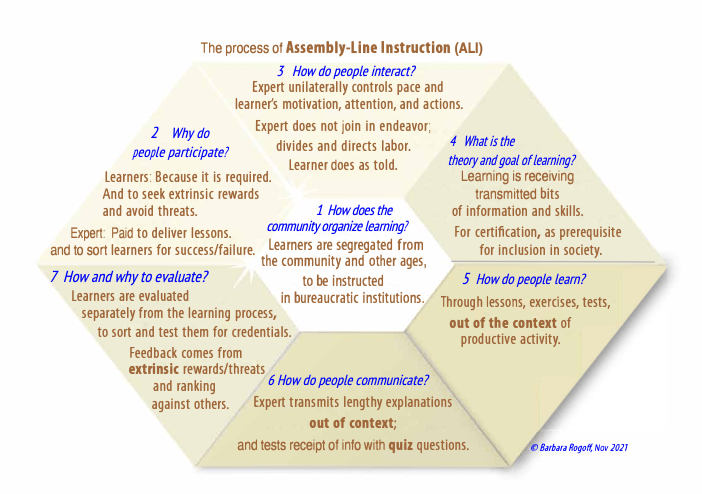Assembly-Line Instruction Contrasts with Learning by Observing and Pitching In
Unlike learning through Learning by Observing and Pitching In, Assembly-Line Instruction controls learners’ attention, motivation, and behavior in settings isolated from productive contributions to the community.
Assembly-Line Instruction is still common in schools worldwide. However, schools can be organized in other ways, including collaborative ways that resemble learning through Learning by Observing and Pitching In (Rogoff, Goodman Turkanis, & Bartlett, 2001).
Series of studies highlight cultural differences in ways of learning that resemble Learning by Observing and Pitching In and Assembly-Line Instruction. One of the first studies showed that Guatemalan Mayan mothers helped toddlers learn how to operate novel objects by being ready with supportive assistance, attentive to the toddlers at the same time that they engaged in adult activities, and coordinating their shared endeavors with articulate nonverbal means as well as talk. The toddlers also were attentive and engaged broadly in the group interaction. In contrast, mothers in a middle-class European American community used an approach that resembles Assembly-Line Instruction in some ways. They used mock excitement, running commentary, and praise to engage and evaluate the toddlers in mini language lessons, sometimes overruling the toddler’s agenda. The middle-class European American toddlers usually attended to their own solo activity or interacted with one other person at a time, seldom the group as a whole (Rogoff, Mistry, Göncü, & Mosier, 1993).
